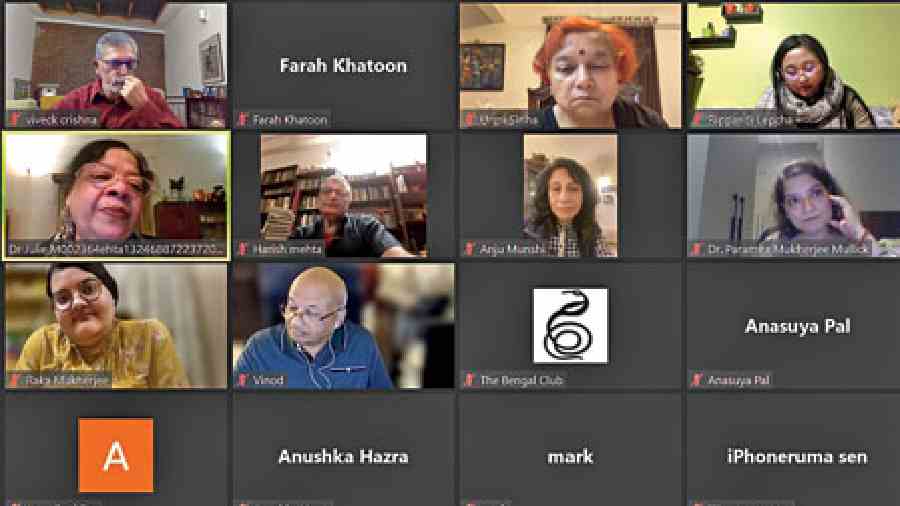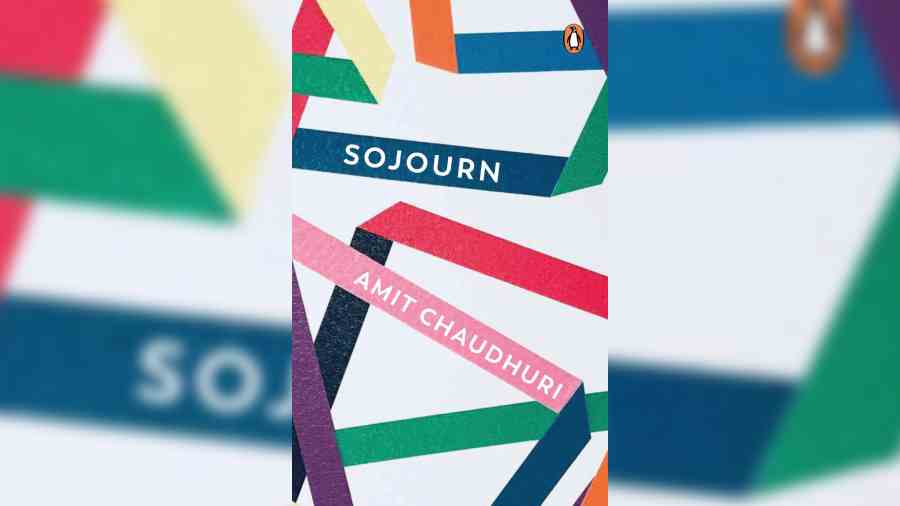Earlier last month, fans of author Amit Chaudhuri’s work got together at The Bengal Club to delve deep into the novelist’s latest book Sojourn that chronicles the journey of an unnamed professor to Berlin in 2004. Organised by the heritage address’s book club, it was helmed and moderated by writer Julie Banerjee Mehta. The talk was also attended online by literary enthusiasts.
The session started off by discussing Chaudhuri’s treatment of spaces in his novels. Julie pointed out: “We have been exploring Sojourn in the book club and the topic of your exposition on space in all of your novels came up… could this have a bearing on your musical acumen as well because we know the architecture of music often speaks to the architecture of literature?” Chaudhuri said the question is not new to him. “It’s possible. The question about music has been asked to me right from the outset of my life as a published writer, which began when I was still a graduate student when my first two novels came out. I have no consciousness of being a singer when I write and vice versa. When I sing, I don’t remember I am a writer. But I have thought about it and you bringing in the context of space is interesting. I would say that space is something that has always attracted me. This is because I have a short attention span and I am bored by the linear. So, space, which is visible and invisible, has always been something that rescues me,” he said. The author who was recently honoured with the James Tait Black Memorial Prize for Finding The Raga: An Improvisation on Indian Music (2021), said that he is not “interested in renaissance-style realistic depiction of space where there is a vanishing point”. “The kind of music I am drawn to — Hindustani Classical music, especially khayal, tries to approximate the expansiveness of space radiating in various direction. In terms of space... rather I like space to radiate in every direction without any weight on any one direction,” he added.

Prior to the December session, the book club members met up for a Zoom discussion, also attended by scholars and book lovers. Moderated by Julie Banerjee Mehta, the hourlong session took place on November 30 (above). Different facets of Chaudhuri’s Sojourn were discussed.
The discussion further progressed to fluidity in his writing and how literature makes non-momentous events memorable.
The later part of the evening focussed on Chaudhuri’s ‘microcosmic brilliance to bring up the macrocosm in his works’. Pointing out how descriptions are at times an act of illusion he said: “Description is what in a realist novel stands behind a character. The main character is of primary interest and who the main character interacts with is secondary and what surrounds them is of tertiary interest. And whatever is described is done so to illustrate the life of the main character. The description is seen as a secondary facet of mainly a narrative-driven genre. It also risks holding up the story. However, many gifted writers working within that particular genre have smuggled in some of their most brilliant moments.” He also shared that these descriptions were an illusion created by the writer and that he learnt this art from cinematographers. “In my case I didn’t even make a pretence that I am preoccupied with the main character of the story. What I wanted to do is bring together an assemblage of moments and give to the reader an illusion that a story is being told about the main character and there was a sequence of work. I learnt this illusion from the process of revision and editing and in my case, it was similar in the way cinema editors would edit,” he said.

Published by Penguin Random House India, Sojourn is Amit Chaudhuri’s eighth book and it chronicles the life of a professor visiting Berlin and how he gets lost not only in the city, but also in its legacy. Price: Rs 499
The last leg of the immersive session brought to the fore the evolution in Chaudhuri’s craft and the challenges he faced and was still facing as a writer. He shared why he wrote non-conventional and non-voluminous stories. “Everytime I have written a short book, I have had moments of panic as structurally it’s different from the conventional form. I had to wait for two years to get a publisher for A Strange and Sublime Address. This time when I finished Sojourn I was like why do I have to go through this panic periodically?” he said.
Before the floor was opened to the audience, Chaudhuri stated that what had changed was that while he was willing to take risk earlier, now he didn’t care.
